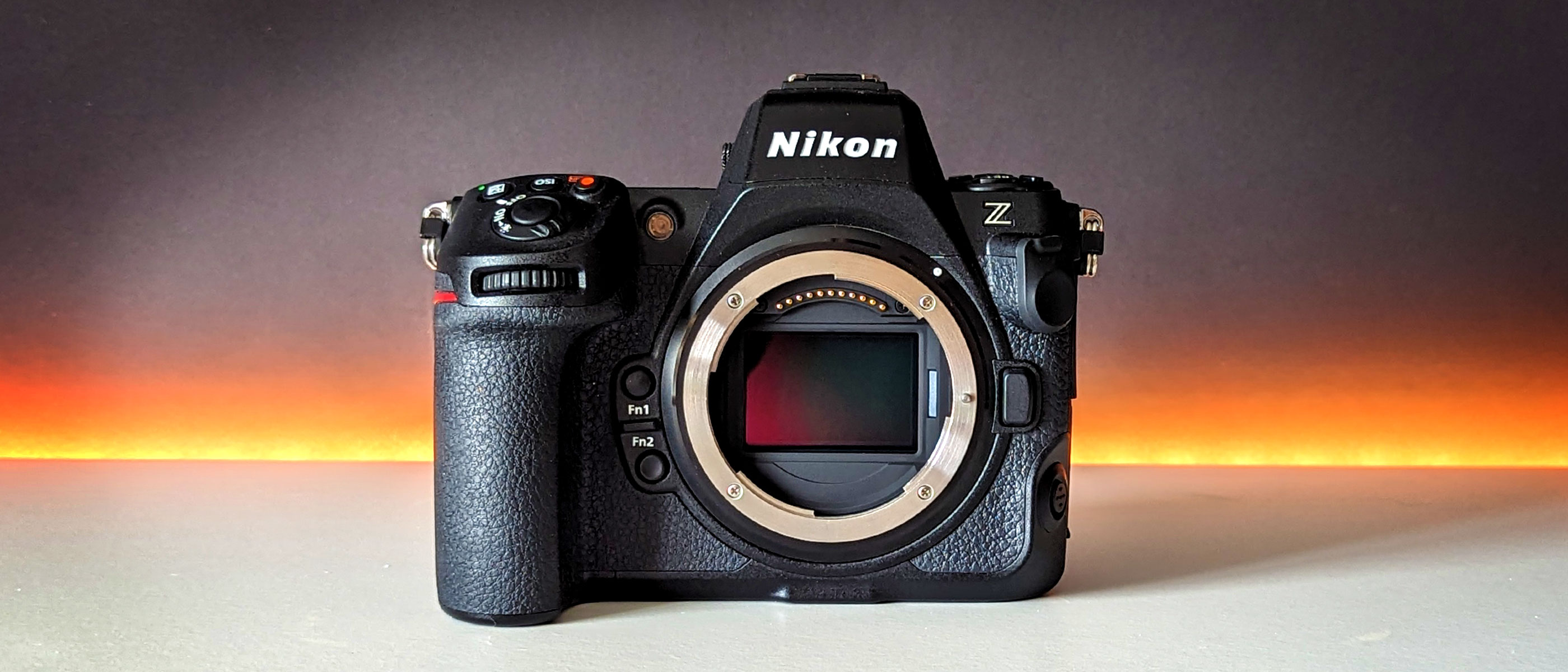Space Verdict
If you combined all the best parts of the flagship Nikon Z9 and the best DSLR in the world, the Nikon D850, you'd be left with this heavy-hitter; the Nikon Z8. Professionals need look no further and amateurs may want to invest.
Pros
- +
Excellent image noise handling
- +
Insane high FPS burst speed
- +
Extremely detailed stills and videos
- +
Silent shooting great for quieter shoots
Cons
- -
A big size increase from the Z7 II
- -
Price tag not for the faint of heart
- -
Overkill for beginners and intermediates
Why you can trust Space.com
The Nikon Z8, launched in May 2023, is Nikon's latest mirrorless camera and is designed for professional photographers due to its myriad features and connectivities. We think it's one of the best cameras for photos and videos and is also one of the best cameras for astrophotography if a little on the expensive side.
It sits almost at the top of the Nikon mirrorless range at the time of writing, between the Nikon Z7 II and the Z9 taking a little influence from both camera bodies, taking a similar position as the Nikon D850 does in Nikon's DSLR line-up.
The Z8 shoots 45.7MP stills as seen in the Z7II but combines this for professional hybrid shooting with the 8K 60p 12-bit video capture of the Z9. Sure, it shoots RAW images but it also captures a whole host of video codecs as well such as N-Log, ProRes Raw HQ and more.
It should suit all kinds of photographers as well. From astrophotographers thanks to the high ISO sensitivity of up to an expanded ISO 102,400 to sports and action photographers with the 120FPS maximum stills burst speed and videographers. But there are a few limitations that one should be aware of.
Nikon Z8 review
Nikon Z8: Design
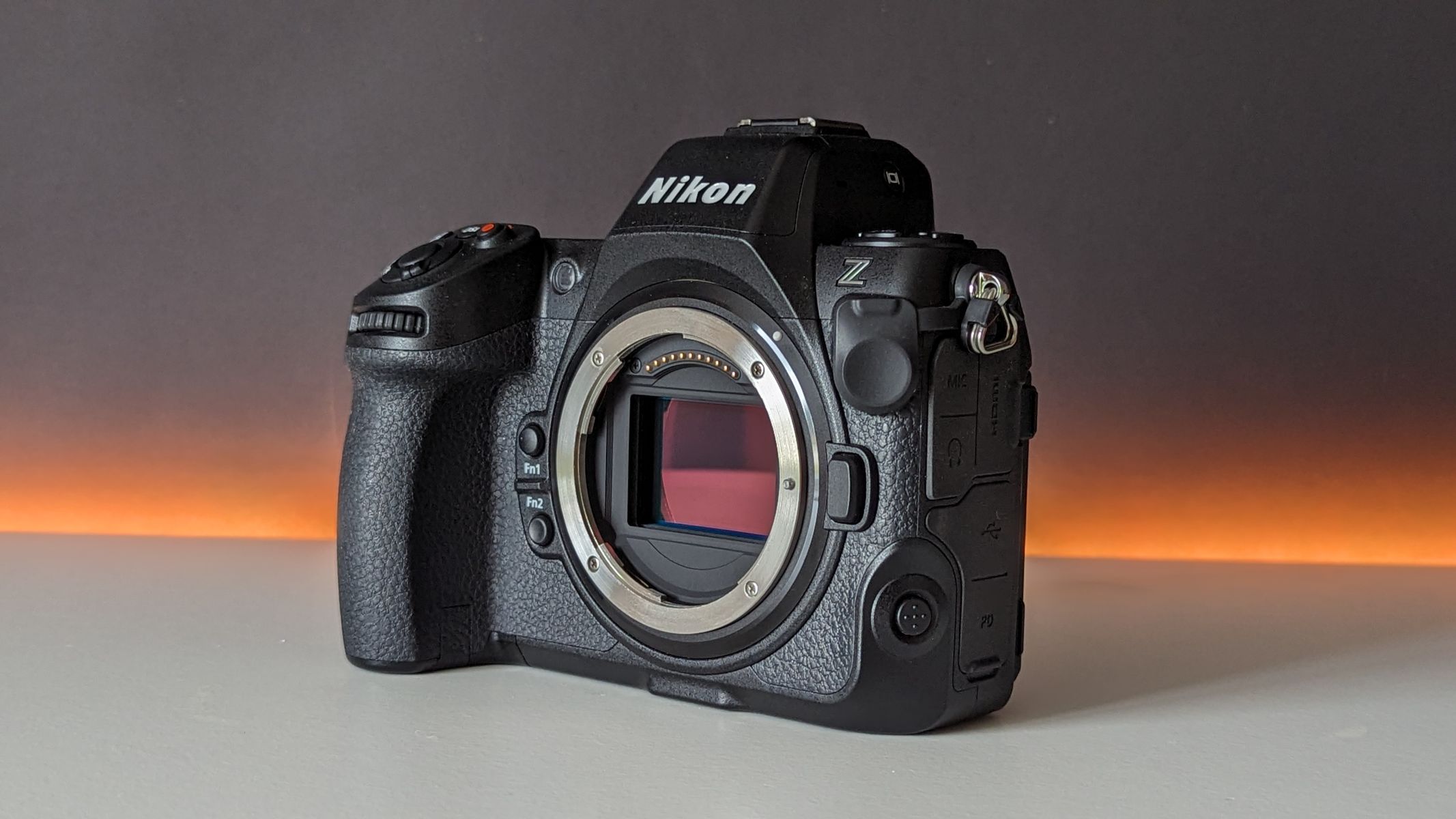
- Outstanding built quality, the Z8 feels sturdy and strong
- Useful button placement all over the camera body
- Although larger than lower-level Nikon mirrorless cameras it's still lighter than other flagship models
Upon picking up the Nikon Z8 for the first time, we were immediately reminded of the Nikon Z9 and the Nikon D850 both in build quality and looks. Not for the faint of heart, this camera is big and feels like a professional body straight away. Weighing 2.01 lb (910g) including the battery (of which it takes just one) and with dimensions of 5.67 x 4.69 x 3.27-inches (144 x 119 x 83mm) it feels beefy and weightly, especially when paired with one of the professional-level lenses that you're most likely going to pair it with.
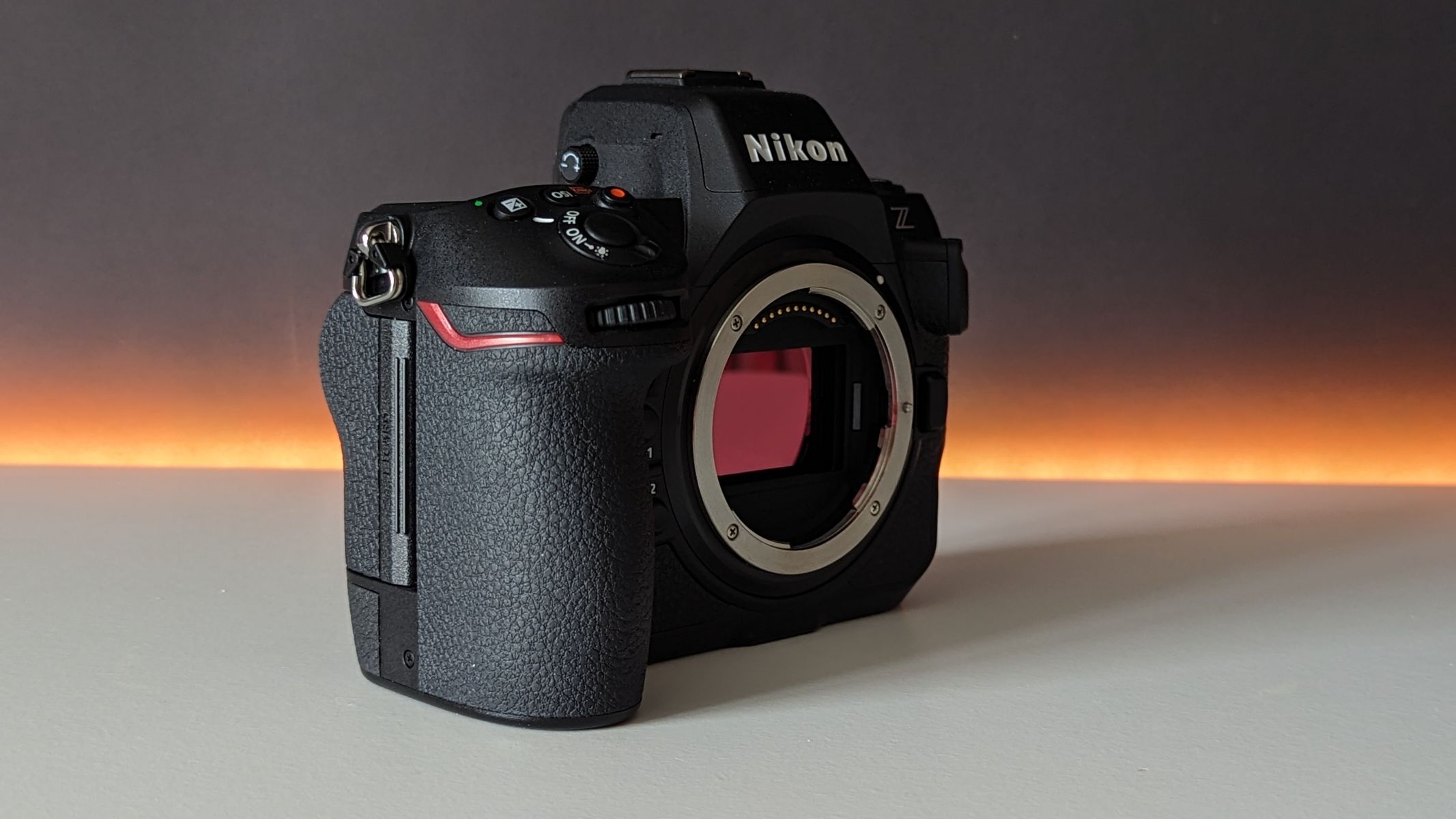
Sensor: Full-frame 45.7MP
Lens mount: Nikon Z
ISO range: 64-25,600 (expandable to 102,400)
Video: 8K 60p 12-bit
Weight: 2.01 lb (910g) inc. battery
Memory card slots: Single SD UHS-II and single CFexpress/XQD card
While this bulk and weight will be disappointing for some amateur and hobbyist photographers Nikon has stated that it's actually 30% smaller than the Z9 (their top-of-the-line flagship camera) and 15% smaller than the D850.
The round electronic viewfinder cover is reminiscent of the D850 for sure, but the blackout-free Real-Live 3.69 million dot Quad VGA OLED EVF can be adjusted both in brightness (with 18 adjustments) and color balance for more accurate color renditioning. Oddly, it's a tad lower in resolution than some of its class competitors. The Sony A7R V which we reviewed previously upgraded over the A7R IV to a massive 9.44 million dots.
One of the bugbears of many professional cameras in the past was its insistence upon tilting-only rear screens. Thankfully, it seems Nikon has listened to feedback over the years as the Z8 follows suit with other mirrorless models. Its four-axis screen which tilts left-to-right and top-to-bottom makes recomposing scenes much easier without awkward contortions.
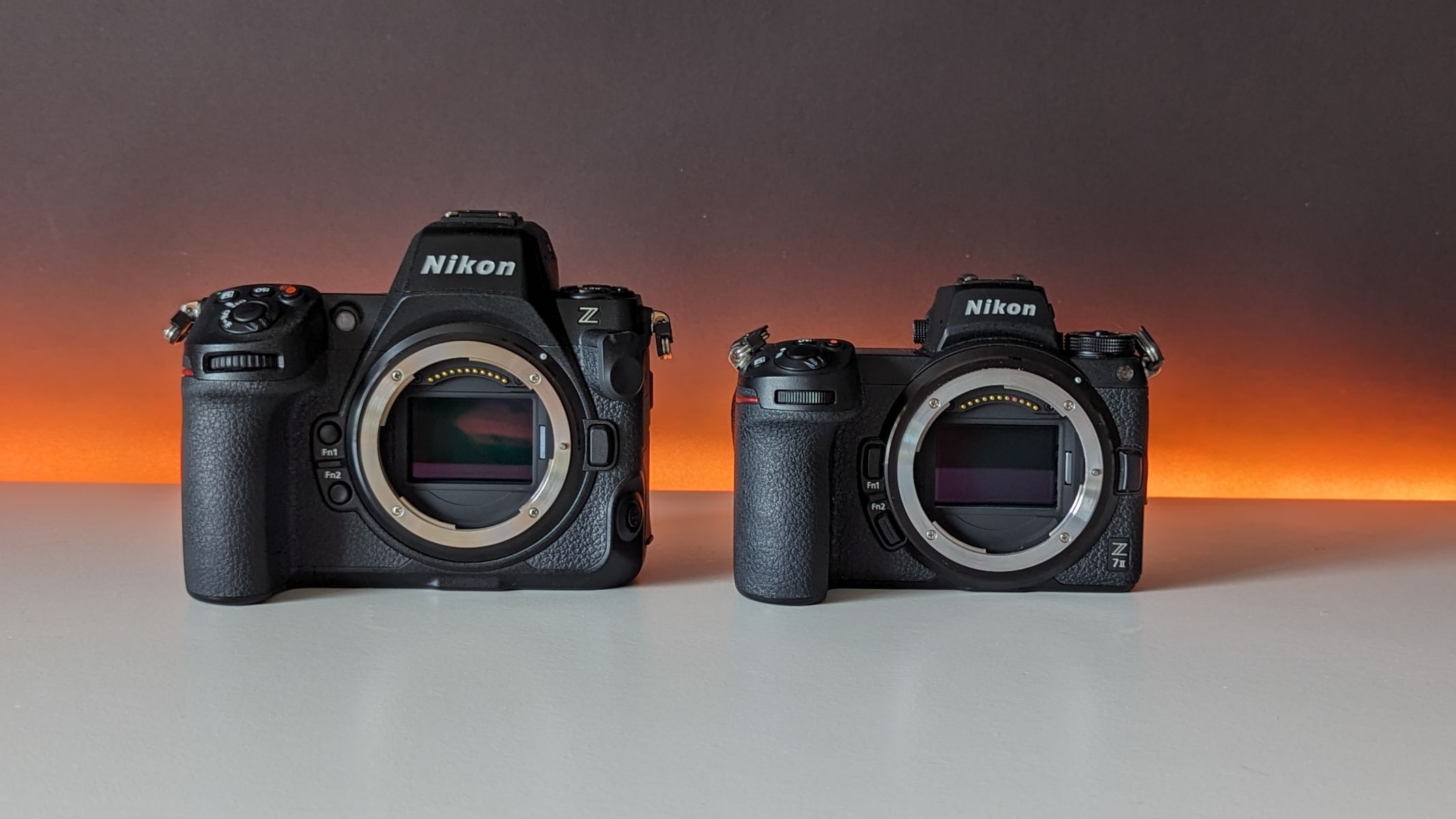
Nikon Z8: Performance

- 120FPS burst speed is insane but it has limitations
- Sharp, reliable autofocus and EyeAF works on even the trickiest of subjects
- Starlight mode enables autofocus detection down to an unheard of -9EV
An outstanding camera with outstanding specs, the Nikon Z8 seems to do it all. Fast and reliable autofocus and bang-on EyeAF can detect subjects automatically even in darker conditions with the autofocus detection range dropping to as low as -7EV which equals or betters almost every other camera we've ever tested. However, enable Starlight View (in menu d9) and this drops down to an astonishing -9EV which is the best we've ever seen.
It does this by ramping up the viewfinder's brightness making those pitch-black scenes when taking astrophotographs that much brighter, including inside the electronic viewfinder. Don't worry though, night vision can be retained through the use of the night vision mode that we speak about in the functionality of the camera below.



Ever needed to capture stills faster than most videos shoot? No, us neither. But there are some professionals who will need the best speed possible, like motorsports, action and other sports photographers. Does 120FPS with autofocus and autoexposure tracking sound fast enough? Because that's what the Z8 manages to do, and with a Pre-Release Capture feature it means you (hopefully) won't miss the shot when something quickly unfolds, but there is one strong caveat: It will only shoot this speed at 11 megapixels, not the full 45.7MP the camera is capable of shooting at. For most print purposes this isn't so much of an issue because printers just upscale the print resolution to suit. But it does become a problem if you're planning on cropping down into the photo.
Need to shoot high burst speed at maximum resolution? That'll see you drop down to 60FPS but with black-out during exposures. Want it completely blackout-free? That'll cost you another 30 frames, capable of capturing full res at 30FPS max but this will only be shot in small JPEG mode. Nikon also seems to be moving away from JPEG by including HEIF shooting which, although not standard across the industry, does include much more color rendition than the highest-quality JPEG.




A camera that costs $4000 and that ships with the features and connectivity that the Z8 has should tell you a lot about what kind of lenses you'll want to pair with it. Likely, most users won't skimp on the glass once they've dropped this kind of money on the camera (we would recommend getting the best lenses you can for any given camera you own). So we tested it with the Nikon 24-70mm f/2.8 S and were mightily impressed with the level of clarity and edge-to-edge sharpness this camera can attain.
Nikon Z8: Functionality
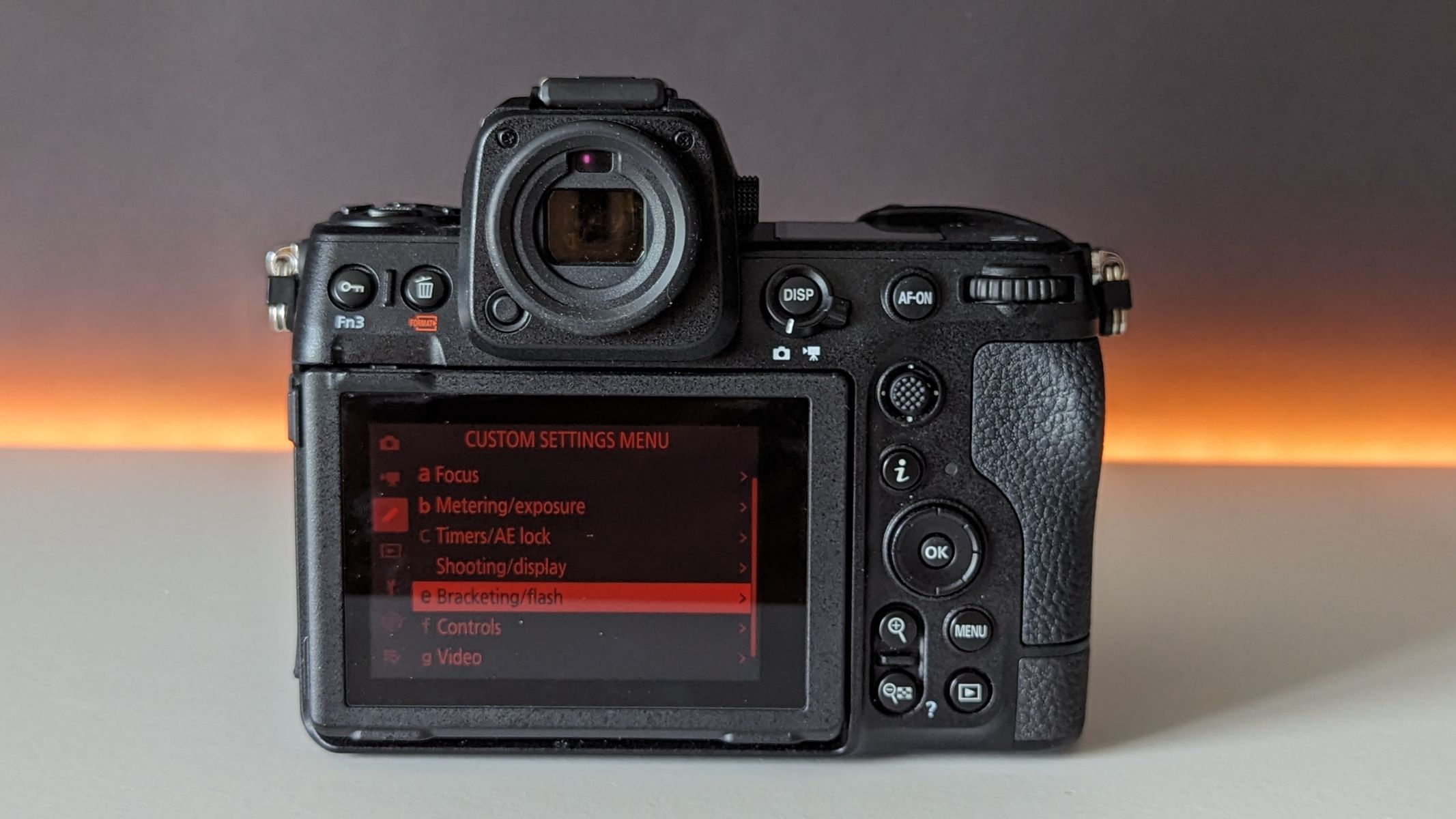
- Night vision mode for astrophotographers
- 1x CF Express Type-B and 1x SD UHS-II card slots are versatile but restrictive for some
- Tilting rear screen only rotates fully on two of four ways
What's the bane of our lives as astrophotographers? Getting our night vision ruined. When out in a dark sky location and shooting for hours away from street lights and car headlights what is the one thing that always seems to get us on every shoot? That's right, the rear LCD screen. At some point a menu or image review flashes at us and then we have to wait another 15 minutes before night vision is restored. However, you can now use and customize two different night vision modes. This dims the rear screen and electronic viewfinder and uses only red pixels to help preserve night vision.
We also like the fact the charging light (CHG) is on the left of the body, in-keeping with other Nikon mirrorless cameras, because this helps us charge and protect night vision when shooting the stars.
As astrophotographers, we often like to take spare memory cards and batteries when shooting because those long exposures over several minutes and hours tend to fill up and heat up quickly. Most of the time an astrophotographer won't necessarily require shooting to two cards simultaneously (unless you've had a traumatic experience with a card failing, which let's face it, some of us have) but seeing as it's a professional mirrorless body we're testing it's frustrating there's one of each. This approach is useful to catch everyone regardless of their card catalog with some only shooting one or the other type, and the cards can be shot to simultaneously, but it requires an investment with a foot in both camps which we're not entirely convinced by.
While there are only a few niggles we have with the Z8 it's worth noting that the rear LCD screen is a little frustrating. Rather than the vari-angle style of Canon and other manufacturers which allow a full 360 rotation of the screen Nikon's 4-way tilting screen only fully tilts in two directions; facing up and facing to the right when looking at the rear of the camera. Down and left gives a rather more protracted 45-degree and 30-degree tilt only. When composing astrophotographs, foreground elements in wide-field photography is crucial so some will have to orientate the camera on the tripod specifically to account for this. It's a shame because we think this would otherwise be a great addition to the mirrorless line-up (the Nikon Z7 II only has a top/bottom tilting screen).





One thing Nikon always seems to absolutely nail though is the button layout. Again, the Z8 is no exception. We love the control of the exposure settings through the use of the command and sub-command dials with the ISO and exposure adjustment buttons sitting right next to the shutter release button for photographers to adjust with speed and precision.
Two Fn buttons on the front can be programmed to change all kinds of settings for photographers to work faster (ideal when chasing the light or trying to set up quickly for an astro shot before cloud rolls over). As can the third Fn button on the top-left rear of the body.
Should you buy the Nikon Z8?
The Nikon Z8 aims squarely at professionals who need exceptional detail, super fast shooting speeds and a camera that's built like a tank. Sure, Canon and Sony's autofocusing may be a little faster on some models, but there's no other camera we're aware of that can perform so well on a multitude of different subject types. Heck, it even has a night vision mode to satisfy us star nerds.
It's so capable in both stills and video that we'd recommend this to anyone who wanted the latest, best mirrorless camera. However, at $4000 it's above many beginner budgets and will come with so many high-end features that a lot of readers will never use. That said, if you want to invest in a camera that will last you for several years to come, we can't think of a better body.
If the Nikon Z8 isn't for you
Beginners, hobbyists and those with strict (or even moderate) budgets probably won't want to sink their teeth into the Z8. Instead, get much of the functionality but a big drop in price and opt for the Nikon Z7 II which is around $1000 cheaper.
But for those that just want to enter the full-frame mirrorless world for minimum outlay and maximum space and weight saving the Canon EOS R8 is a safe bet. Canon's second-cheapest full-frame model and its lightest will see you saving a few bucks and a few pounds in your camera backpack.
Not fussed about age and the best-performing features? You can save a bomb and grab the Nikon Z6 and still get highly impressive astrophotography performance out of one of Nikon's original mirrorless debut models.
Join our Space Forums to keep talking space on the latest missions, night sky and more! And if you have a news tip, correction or comment, let us know at: community@space.com.

Jase Parnell-Brookes is the Managing Editor for e-commerce for Space and Live Science. Previously the Channel Editor for Cameras and Skywatching at Space, Jase has been an editor and contributing expert across a wide range of publications since 2010. Based in the UK, they are also an award-winning photographer and educator winning the Gold Prize award in the Nikon Photo Contest 2018/19 and named Digital Photographer of the Year in 2014. After completing their Masters degree in 2011 and qualifying as a teacher in 2012, Jase has spent the last two decades studying and working in photography and publishing in multiple areas, and specializes in low light optics and camera systems.
